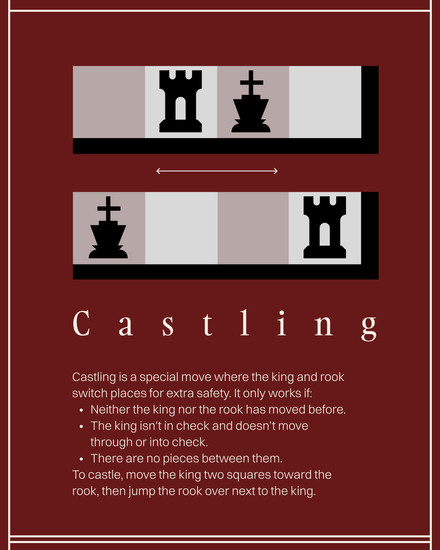Gambeti's Guide to Chess
- Gambeti
- Apr 17
- 3 min read
Welcome to Gambeti's Guide to Chess. Whether you're brand new to the game or looking for a quick refresher, this guide breaks down everything you need to know to start playing with confidence. Simple, timeless, and strategic, chess is more than just a board game. It is a battle of minds that rewards patience, calculation, and bold ideas.
The Chessboard Layout
The chessboard consists of 64 squares, arranged in an 8 by 8 grid of alternating light and dark colors. Each player begins with 16 pieces placed on the two rows closest to them. The second row holds all eight pawns. The first row holds the major pieces in this order from left to right: rook, knight, bishop, queen, king, bishop, knight, and rook. The white queen always goes on a white square and the black queen on a dark one.
Understanding the Pieces
Each piece moves in a unique way, and mastering these movements is the foundation of good strategy.
Pawn
Moves forward one square but captures diagonally. On its first move, a pawn can move forward two squares. When a pawn reaches the far end of the board, it can promote into any other piece (except a king).
Rook
Moves in straight lines horizontally or vertically across any number of squares. Powerful in open positions and especially strong when controlling open files.
Knight
Moves in an L shape: two squares in one direction and then one square perpendicular. It is the only piece that can jump over other pieces.
Bishop
Moves diagonally across any number of squares. Each bishop controls either only light or only dark squares, depending on where it started.
Queen
The most powerful piece. It can move any number of squares vertically, horizontally, or diagonally.
King
Moves one square in any direction. The goal of the game is to protect your king while attacking your opponent's. The king also has one special move called castling.
Special Chess Moves
Castling
A defensive move that allows you to move your king two squares toward a rook and then move that rook to the square the king passed over. This can only happen if neither piece has moved before, the path between them is clear, and the king is not moving through or into check.
En Passant
A rare move where a pawn can capture an opponent’s pawn that just moved two squares forward from its starting position, passing through a square the capturing pawn controls. This capture must happen immediately after the opposing pawn’s move.
Pawn Promotion
When a pawn reaches the final rank, it must be promoted to a queen, rook, bishop, or knight. Most players choose a queen for its power, but underpromotion can be a strategic decision in rare situations.
How to Win
The objective of chess is to checkmate your opponent's king. This means placing the king under threat of capture with no legal moves to escape. A game can also end in a draw for several reasons, such as stalemate, threefold repetition, or insufficient material.
Learn and Improve
Chess is a lifelong journey. Every player from beginner to grandmaster is always learning. Understanding the rules is just the first step. As you continue, you will begin to see patterns, develop strategies, and sharpen your intuition.
Explore Gambeti for more chess-inspired content, tools, and style that reflect the elegance and focus of the game itself.





















